 Regia Marina – 8 destroyers:
Regia Marina – 8 destroyers:R.Pilo, G.C.Abba, P.Bronzetti, G.Missori, A.Mosto, I.Nievo, F.Nullo, S.Schiaffino 1914-1944
WW2 Italian Destroyers
Poerio | Aquila | Mirabello | Leone | Sella | Sauro | Turbine | Navigatori | Freccia | Folgore | Maestrale | Oriani | Soldati | Medaglie d’OroWW2 Italian Torpedo Boats
Indomito | Audace | Audace(ii) | Pilo | Sirtori | La Masa | Generali | Palestro | Curtatone | Albatros | Spica | Pegaso | Ciclone | ArieteThe Rosolino Pilo class was eight destroyers built at Odero and Pattison Italian Regia Marina before and during the First World War. They were an improved variant of the Indomitos from 1912 and typical of the “tre pipe” series. They were reclassified as torpedo boats in 1929, with seven of them seeing action in the Second World War. Two hit mines, two fell in German hands after Sept. 1943, and three served with the co-belligerence forced and post-war Marina Militare, decommissioned in 1958.
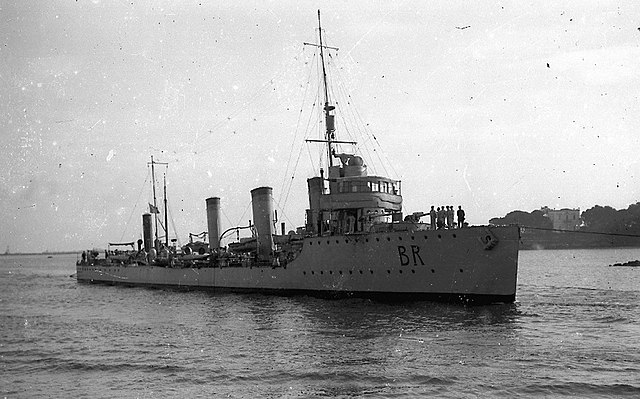
Pilade Bronzetti in WW1
Development
The Italian destroyers evolved from torpedo boats as the most satisfying and efficient way to destroy them. The name “contratorpediniere” was first applied to the Soldati from Ansaldo in 1906-1907. However following the new trend proposed by Britain, the River class a forecastle and steam turbines seemed the right combination. The first to introduced the main “package” for the Regia Marina were the Indomito class of 1912. Built by Pattison in Naples, with Tosi steam turbines, the “I” became the first large, modern, seaworthy Italian destroyers. They had been designed by Eng. Luigi Scaglia of Pattison and took an unmistakable silhouette with 3-funnels, which was prepetuated until the Generali class destroyers (1921-22) as the ‘tre pipe’ or ‘tre canne’.
There was a “near repeat”, the two Ardito class build at Odero, Leghorn and the Audace from the same, with a modified design, the latter testing (with mitigated success) the Swiss Zoelly steam turbines. But in 1914 with the war looming at the horizon, the Italian government ordered to another yard a serie based on the Indomitos, but larger, faster and with a better armament, notably regarding torpedoes. They were ordered to the Odero shipyard in Sestri for six boats, plus two more of the same design at Pattison.
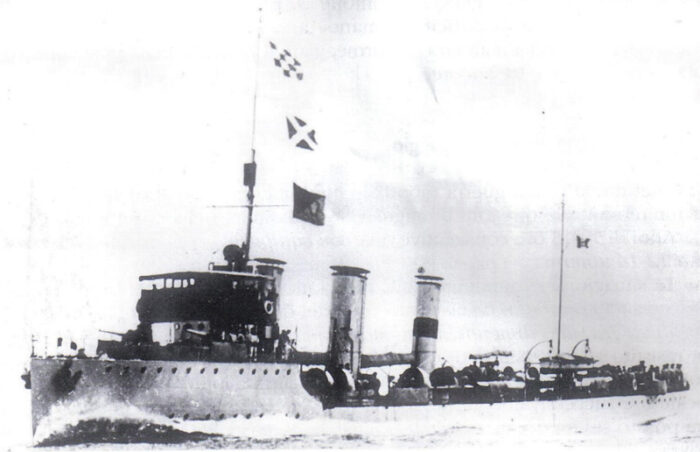
Missori at full speed, date unknown.
An improvement on the Indomito class, this class had a single calibre gun armament, stronger torpedo armament, larger tank capacity for fuel oil (150 tonnes instead of 100), more economical turbines for cruising speed, and the guide rails for minelaying set up from the outset. After the First World War the 6—3in guns were replaced by 5—4in/35 guns, 2-40mm/39 and 2—6.5mm MGs. All reclassed as torpedo-boats on 1 October 1929. During 1940-45 the armament was modified to: 2—4in/35, 6-20mm/65, 2 or more 8mm MGs, plus the TT.
About the Odero shipyard
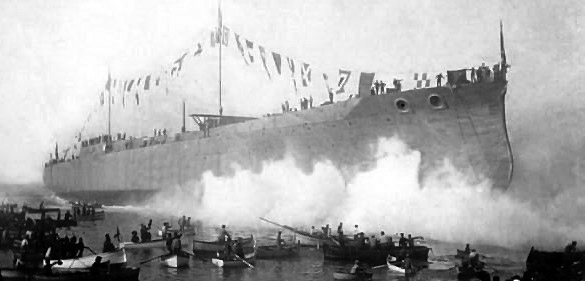
Cantieri navali Odero was founded in 1846 by the Westerman brothers in Genoa-Sestri Ponente. It was purchased by Nicolò Odero in 1872. Later it was amalgamated to the Ansaldo-San Giorgio shipyard at Muggiano and armament works of Vickers-Terni in what became the Odero-Terni under Attilio Odero. Later it also absorbed the Cantiere navale fratelli Orlando of Leghorn in Livorno, and this became later OTO Melara but the original shipyard closed in 1949.
Until then, the cmpany gained fame by building pasenger ships for the Navigazione Generale Italiana but also paddle steamers for lakes, especially the Società Lariana. Until 1907 its take in naval construction of the regia Marina was small, with 13.5% (8.4 million lires of orders) for the military versus 86.5% for the merchant navy (53.7 million lires). This changed in 1904 when integrating the iron and steel activity with the shipbuilding activity, as well as an armament branch leading to the “Vickers Terni Società italiana di artiglierie ed armamenti”. The naval artillery factory was established in La Spezia. Shipbuilding remained the main activity as in 1906 Cantieri Navali Riuniti incorporated the shipyards of Palermo, Ancona and Muggiano.
This way, many ships of a same design could be spread out between these, like destroyers. Soon the yards collective output rose to 400 ships between 1907 and 1910 and soon expanded the Sestri shipyard with two new slipways for large size vessels. The company built among others the 1908 armoured cruiser Amalfi, the dreadnought Leonardo da Vinci, both at Cantiere della Foce and the Argentinian cruiser ARA Almirante Brown (C-1) last cruiser ever in that yard.
Design of the class

Rendition by Conways
The Rosolino Pilo were basically a repeat of the Indomitos. Major changes were an artillery of uniform caliber, increased fuel oil tank capacity and improved cruising turbines. They were also a bit more seaworthy and integrated four torpedo tubes instead of two.
Hull and general design
The general hull design was more refined than on the Indomito class. Tests were made to improve their seaworthiness. The hull of the Pilo class was in general more fuller, with greater internal capacity, helping to make larger tanks, 50t each (100 total) up to 150t total. Otherwise their forecastle was still short about 3.5 times the overall lenght and they had a generous rounded poop with a semi-transom, almost flat end. They also carried anti-collision bars aft. Superstructure were quite minipal, which helped completing them in two months: The bridges were two-stage and short, same type as before, with an open bridge on the roof and main artillery telemeter.
Both masts and funnels were raked and of the exact same type and location. ven the air intake pipes were placed the same way and of the same size. There single light projector was the same, placed just forward of the aft mast, and there was a small radio room located in a small local aft of the aftermost funnel. The latter were exactly th same as on the Indomito in shape, all equal size with the central one doubled due to the way the boilers exhausts were truncated. The only real change in design revolved around armament.
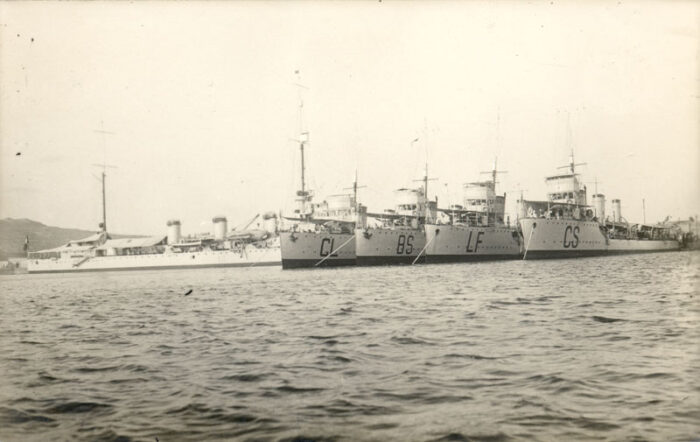
Several TBs of the class in Varna in WW2.
Powerplant
 Nothing revolutionary there, they just retook the proven solution of the previous class, with a combination of two Tosi steam turbines fed by the steam from 4 Thornycroft boilers. The Tosi turbines were initially a licenced version of the Parsons, and were considered reliable (far more than the Zoelly turbines tried on the Auface class). The Ardito sub-class had Parsons turbines, and Audace ii curated from the Japanese in 1917 had Brown-Curtis Turbines plys Yarrow booilers for comparison.
Nothing revolutionary there, they just retook the proven solution of the previous class, with a combination of two Tosi steam turbines fed by the steam from 4 Thornycroft boilers. The Tosi turbines were initially a licenced version of the Parsons, and were considered reliable (far more than the Zoelly turbines tried on the Auface class). The Ardito sub-class had Parsons turbines, and Audace ii curated from the Japanese in 1917 had Brown-Curtis Turbines plys Yarrow booilers for comparison.
They diverged in performances by yards however: The Odero ships were all rated for 16,000. It seems however that the Pattison boats were only rated for 14,800. These were Antonio Mosto and Francesco Nullo, despite having the same powerplants. The class was rated for 30 knots (55,56 km/h) (more on trials, light, c32-33 knots). But again, the Pattison bpats were slower at 29 knots.
The class was caracterized by their better fuel capacity thanks to a reworked hull which accomodated larger internal fuel tanks in the lower hull. They carried 150 tonnes, enough for 1200 nautical miles at 14 knots or 2400 nautical miles at 12 knots, so double for trading two knots in cruise speed. It seems their rudder design were the same as the previous ships, as the shaft struts and propellers shape and diameter.
Armament
Unlike the Indomitos, it was decided to discard their heavy 4.7 inches armstrong or 120 mm/40 for four 3 in (76 mm)/40 guns, two in tandem on the forecastle, two behind the forecastle on the main deck firing forard (making for four guns in chase at 0°) and two on the aft/poop deck in echelon to optimize cross-deck fire, likely the two AA guns with a great arc of fire and up to 65° elevation. On wikipedia they are described as /30 caliber but it’s a transcription error from the Italian to British wikipedia page.
They also carried four instead of two 17.7 in (450 mm) torpedo tubes. This was just an integration from design of the Indomito upgrade whgich received in 1914 two more torpedo tubes. Also soon two guide rails for laying up to ten mines were added at the stern. In 1916-17 they were upgraded with five much faster 4 in (100 mm)/35 and a single 40 mm (1.6 in)/39 AA gun. This will changed a lot during their long career.
4-in/40 Modello 1916
These four guns were installed forward, tow on the forecastle, two in echeloned pairs aft of the forecastle on the weather deck, both close to the amidship (largest) funnel. They seems to be not sponsoned.
They were a British design licenced-produced by Ansaldo:
The original 3-inch (7.62 cm) was called the QF 12-pounder 12 cwt naval gun based on its weight (0.6 tons, 510 kg)
Length: 10 ft 3 in (3.12 m), barrel alone 10 ft (3 m)
Shell: Fixed QF unlike Britain and Japan which used separate rounds. This enabled faster firing.
The Breech used single-motion screw for a Rate of fire of 15 rounds per minute
Muzzle velocity was 2,210 ft/s (670 m/s) with an effective range of 11,750 yd (10,740 m) at 40°, almost as for the main gun.
4-in/40 AA Modello 1916
It had a pedestal mount going from -10° to +65° elevation, and weighed 1,790 kg (3,950 lb) complete.
Performances were the same as the regular mounted 75 mm/40 Modello 1916. This artillery piece was located aft likely, at the poop. They derived from the licenced QF 12 pounder 12 cwt, Armstrong 76/40 Model 1897.
Full weight 1,676 kg, Length overall 3,139 mm barrel alone 3,048 mm
Rifling; 16 grooves left-handed constant, 76.2 mm
Shell 6.016 to 6.820 kg depending on model Muzzle velocity 690 m/s
12-15 rpm, effective range 5,500 m, max 6,000 m
Elevation +75° on the modello 1917 and 1918.
Torpedoes
The 17.7 inches torpedo tubes (450 mm) used at the time, Thornycroft models built in Italy, by Silurificio Italiano.
No sufficient data on these. 1935 models were rated to reach 3000 nm at 44 knts. There were four single tubes instead of two in the Indomitos, two per side. The aftermost pair was parallel, tubes turned forward, whereas the amidship pair was in echelon, one between the second and third funnel and one between the aft funnel and aft mast.
The ships carried also 10 mines as well during wartime. These could be Vickers Elia (VE) 1,676 lbs. (760 kg), 320 lbs. (145 kg) WH, or one of the Sautter-Harlé types M1916 154 or 220 ib.
⚙ Base design, Odero. |
|
| Displacement | 912t-770t |
| Dimensions | 73m x 7.3m x 2.3m (240ft x 24ft x 7ft 7in) |
| Propulsion | 2-shaft Tosi turbines, 4 Thornycroft boilers, 16,000 (20,000 KW) |
| Speed | 30kts (56 km/h; 35 mph) |
| Range | c1200nm/14kts, 500nm/25kts, 350nm/30kts |
| Armament | 4x 3in/40, 2x 3in/30 AA, 4x 17.7in (450mm) TTs, 10 mines |
| Crew | 4-5 officers, 69-79 ratings |
Modifications and evolution

Rosolino Pilo in 1942, with Breda AA guns, used as convoy escort.
The armament was revised several times during their very long career (see below). After the modernization of 1918 they were all rearmed indeed with five 102 mm guns, far more potent. There were also two 40 mm guns (adapted from the Vickers 2-pdr AA) also added as well as modifications into the hull to improve stability, degraded after these additions. This brought the displacement to 900 tons and top speed below 29 knots. Having no machinery upgrades this top speed was likely no better than 27-28 knots in WW2. They ended in the 1950s as minesweepers for some at 25 kn,ots after the rmoval of two boilers to increase internal capacity, notably fuel oil. This long career also tells a lot about the quality of their construction and reliability.
Bertween 1919 and 1921 all saw the removal of their six 76 mm guns for five 102mm/35 S1914-1915, one on the forecastle. They also had two 40mm/39 V1917 rapid fire AA cannons and two 6.5mm/80 Breda light machine gun as AA complement.
No modifications were made during the interwar, only they changed classification to torpedo boats.
In 1941-1942 the ones still in service had their main artillery reduced to three 102mm/35 and the were eventually removed, as well as their two 40mm/39 as well as a pair of 450 mm torpedo tubes. They were traded for six 20mm/65 Breda 1940 autocannons and two 2 DCT as escorts. No modifications are known from the germans for the two impressed in the Kriegsmarine.
In 1953-1954, Abba and Mosto were converted to fast minesweepers, loosing two boilers for 5 knots max, kaaping one 102mm/35 gun, an a number of 20mm/65 Breda AA guns as well as two 450mm torpedo tubes but they gained a radar and a mechanical minesweeping gear was installed at the poop.
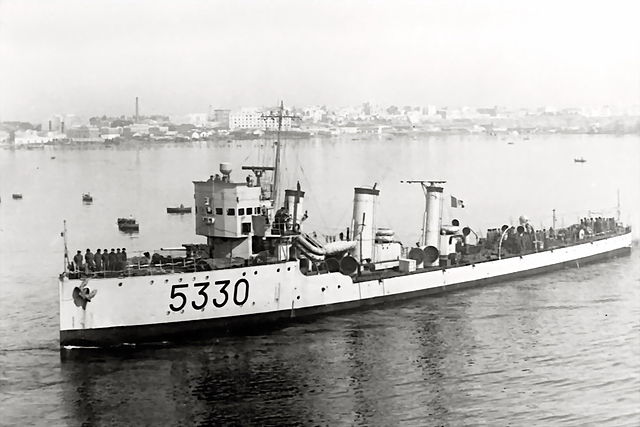
Cesare Abba postwar as minesweeper, renamed M 5530, 1955.
Fratelli Cairoli 23.12.1940 hit a mine laid by HMS Porpoise off Tripoli. Simone Schiaffino 24 April 1941 also hit mines off Tunisia. Giuseppe Dezza 16 September 1943 was captured by German troops at Fiume and became TA35. On 17 August 944 she hit a mine off Pola. Giuseppe Missori was also captured on 10 September 1943 was captured by German troops at Durazzo, renamed TA22. On 25 June 1944 she was badly damaged a British aircraft SE off Trieste, scuttled there, never repaired, on 2 May 1945. Giuseppe Dezza (Pilade Bronzettt was renamed on 16 January 1921) was scuttled on 16 September 1943 in Fiume harbour; seized and repaired by the Germans, who recommissioned her as JA 35 on 9 June 1944. Sunk by mine in Fasana Channel off Pola on 17 August 1944 but refloated. Giuseppe Misson captured by the Germans on 10 September 1943, in Durazzo harbour. Designated JA 22 under German colours and recommissioned on 3 December. Damaged by the Italian part of her crew (11 August 1944) and towed to Trieste for repair. Scuttled by the Germans in Muggia Bay (near Trieste). Scrapped 1949. Mosto and Cesare Abba became minesweepers in 1953. Nullo and Schiaffino were mined off Libya and Cape Bon respectively.
Read More/Src
Books
Favre, Franco. La Marina nella Grande Guerra. Le operazioni navali, aeree, subacquee e terrestri in Adriatico (in Italian).
Fraccaroli, Aldo (1970). Italian Warships of World War 1. London: Ian Allan. ISBN 0-7110-0105-7.
Fraccaroli, Aldo (1985). “Italy”. In Gray, Randal (ed.). Conway’s All the World’s Fighting Ships 1906–1921. Annapolis: Naval Institute Press. pp. 252–290. ISBN 978-0-87021-907-8.
Whitley, M.J. (2000). Destroyers of World War Two: An International Encyclopedia. London: Cassell & Co. ISBN 1-85409-521-8.
Links
https://www.marina.difesa.it/noi-siamo-la-marina/mezzi/mezzi-storici/Pagine/ABCD/abba.aspx
https://www.navypedia.org/ships/italy/it_dd_pilo.htm
https://en.wikipedia.org/wiki/Rosolino_Pilo-class_destroyer
https://www.deviantart.com/digitalexplorations/art/RNI-Rosolino-Pilo-class-destroyer-CFS2-879446319
https://web.archive.org/web/20160304103949/http://www.studistoricianapoli.it/dettaglio_ente.php?id=267
http://www.trentoincina.it/dbunita2.php?short_name=Abba
http://www.trentoincina.it/dbunita2.php?short_name=Missori
http://www.trentoincina.it/dbunita2.php?short_name=Schiaffino
http://www.trentoincina.it/dbunita2.php?short_name=Mosto
http://www.trentoincina.it/dbunita2.php?short_name=Pilo
http://www.trentoincina.it/dbunita2.php?short_name=Nullo
http://www.trentoincina.it/dbunita2.php?short_name=Nievo
http://www.grupsom.com/Sommergibili/F14/TragediaF14.html
http://www.naval-history.net/xDKWW2-4104-31APR02.htm
https://web.archive.org/web/20140202213215/http://rcslibri.corriere.it/bombardatelitalia/bombardate1943.pdf
https://www.betasom.it/forum/index.php?/topic/29461-guglielmo-concato-e-la-tp-schiaffino/
https://en.wikipedia.org/wiki/Category:Rosolino_Pilo-class_destroyers
Videos
Nope
Model Kits
3D
Not found
 Rosolino Pilo (PN)
Rosolino Pilo (PN)
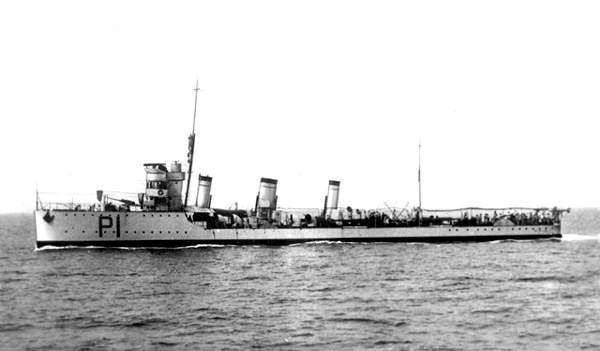
Rosolino Pilo (PN) was the lead ship built at Odero, Sestri Ponente, laid down on 19 August 1913, launched on 24 March 1915 and completed just two months later on 25 May. On 22 December 1916 she took part in a battle in the southern Adriatic against a formation of Austro-Hungarian destroyers. In the Second World War she carried out 45 escort missions. After the armistice of Cassibile she was captured while anchored in Durazzo by the Germans, despite resistance of the crew. A few days later on 26 September 1943 they even managed to regain control of the ship, taking her to a port controlled by the Allies, and then participating in the co-belligerence until she was decommissioned in 1954, Stricken October 1954 and later BU.

Pilo in 1942 with her typical camouflage.
 Giuseppe Cesare Abba (AB)
Giuseppe Cesare Abba (AB)
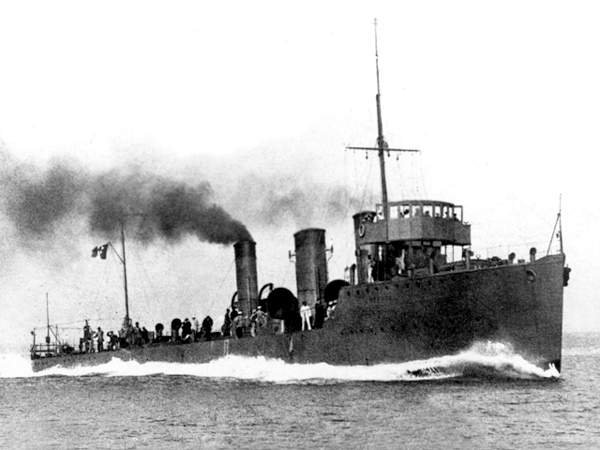
Giuseppe Cesare Abba was laid down at Odero on 19 August 1913, launched 25 May 1915 and completed on 6 July.
WWI operations
In the night between 12 and 13 August 1915 she acted as squadron leader with Mosto and the French destroyer Bisson in search of the Austro-German submarine U 3 which torpedoed the Città di Catania east of Brindisi. Arranged in a radial pattern they followed the route between the presumed ambush point and Cattaro base. They zigzagged in a northerly direction and headed south and at 4.52 on 13 August, Bisson spotted the U-Boot surfaced after a breakdown. She was engaged and by gunfire, Abba arrived to note her sinking.
On 29 December, Abba left Brindisi with the cruiser scout Bixio and HMS Weymouth plus other units to intercept SMS Helgoland leading the destroyers Csepel, Tátra, Triglav, Lika and Balaton, just attacking merchant ships moored in Durazzo. In this battle, Lika and Triglav hit mines.
The night of 25-26 June 1916 Abba (Captain Tanca) escorted Pilo, Mosto and Nievo, MAS 5 and 7 towed by 36 PN and 34 PN for the raid on Durazzo, sinking the steamship Sarajevo.
On 3 August 1916, Abba (captain Petrelluzzi) and Ardente supported an attack by 9 aircraft against Durazzo bu they were diverted to Molfetta and attacked by SMS Wildfang and Warasdiner supported by the cruiser SMS Aspern and TB 80 and TB 85. Ardente, had a machinery breakdown but both managed to join an incoming French destroyer squadron led by Bory. Bory later spotted U 20. A small duel saw Abba engaged by Aspern, also dodging attacked from torpedo boats. They were soon in chase but had to abandon 16 miles from Cattaro.
On 3-4 November 1916 Abba (Captain Civalleri) sailed with Pilo and Nievo for the MAS 6, 7 raid on Durazzo, unsuccessful due to anti-torpedo nets.
On 22 December 1916 Abba, Pilo and Nievo left Brindisi for Cape Rodoni and intercept SMS Scharfschütze, Dinara, Réka and Velebit after their own raid in the Otranto Channel. They were already clashing with the French destroyers Casque, Riviére, Protet, Boutefeu, Dehorter and Bory before fleeing back to Cattaro. Whe the Italian spotted French destroyers they narrowly avoided friendly fire and later had a collision. While Abba was manoeuvring in reverse, Boutefeu rammed her while verering to avoid direct impact, scrapping her starboard. One man from Abba was missinf (thrown overboard). The three damaged ships went back to port.
On 11 May 1917, Abba under captain Poma, sailed with Audace, Ardito, Animoso and Ardente to intercept the destroyer SMS Csikos leading the torpedo boats 78 T, 93 T and 96 T, spotted later at 15:30, at 10,000 metres but they could not catch them before their reach the safety of Pola Batteries.
On 13-14 August she left Venice with Audace, Animoso, Ardente, Orsini, Acerbi, Sirtori, Stocco, Carabiniere and Pontiere in interception of SMS Streiter, Réka, Velebit, Scharfschütze and Dinara plus 6 torpedo boats supported an air raid against Venice. Only Orsini had a brief engagement as they withrdew.
On 29 September she escorted the scout Sparviero, with Orsini, Acerbi and Stocco to support a bombardment of 10 aircraft against Pola. They had a brief clash against SMS Turul, Velebit, Huszár and Streiter plus 4 torpedo boats.
On 16 November 1917, she sailed with Animoso, Acerbi, Stocco, Ardente, Orsini and Audace to intercept a raid of SMS Wien and Budapest and supported the attack of MAS 13 and 15 combined with aircraft and the submarines F 11 and F 13 leading to the withdrawal of the two battleships.
On 18 November she sailed with Ardente, Animoso and Audace to shell Austrian lines between Caorle and Revedoli and on 28 November, with other DDs and the scouts Aquila and Sparviero, she left Venice preceded by seaplanes to intercept an Austrian formation (SMS Dikla, Streiter and Huszár, plus four torpedo boats) which just shelled the railway at the Metauro. They had to abandon chase while off Cape Promontore.
On 7 February 1918, with Audace and Animoso she, towed a MAS destined for the “Buccari prank”, west of Sansego at “point O”, leaving 12 PN, 13 PN and 18 PN sailing 50 miles from Ancona to support the MAS, now freed. At 18.10 Abba (captain Portaluppi) accompanied 65 PN and 66 PN to seize Parenzo, welcomed by the local population, mostly Italian. Their landing parties disarmed the fortifications and they left the 9.
On 5 November, Abba, La Masa, Missori and Pilo escorted the battleship Saint Bon inside Pola and escorted troopships which to occupy the city after landing parties already scouted the area.
She also escorted two steamships with Austrian, German and Polish POWs and soldiers from Fiume to Venice. After 1918 she had eher armament modified, as her sisters.
Interwar and WW2
On 6 August 1928 she took part in an exercise with light cruiser Brindisi, scout Aquila and escort the V Destroyer Flotilla (Abba was its leader) not yer re-rated as TB. They sailed from Parenzo to Pola and had to defeat a simulated attack by the subs F 14 and F 15 however at 8.40 as weather conditions were still rough with heavy seas and rising wind, Abba sighted F 14 starboard abeam and signalled her position to other units and she was eventually sunk in collision by Giuseppe Missori, which was following the Abba at a short distance. F 14 sank 7 miles west of San Giovanni in Pelago (Pola). The crew survive but there was no salvage procedure adn they all died of asphyxia.
As the Second World War, broke out, Abba was the V Torpedo Boat leader, based in Augusta and also comprising Schiaffino, Dezza, La Farina, Albatros.
She was used for convoy escort duties at first in the southern Tyrrhenian sea. On 6 July 1940 she took part in the escort of a large convoy to Libya (operation TCM) from Naples with the troop transports Esperia and Calitea (1100+ infantry between them) and cargos Marco Foscarini, Vettor Pisani and Francesco Barbaro carrying notably 232 vehicles, 5720 t of fuel and lubricants, 10,445 t spare parts and equipments. Abba followed the lead ship Pilo from Catania on 7 July, escorting Barbaro before joining the other transports and the escorting, modern XIV Torpedo Boat Squadron (Procione, Orsa, Orione, Pegaso) and the X Destroyer Squadron (Maestrale, Grecale, Libeccio, Scirocco), light cruisers Bande Nere and Colleoni in distant support. They all arrived safely in Benghazi on 8 July. On 2-3 September 1940 Abba escorted Città di Livorno and Priaruggia from Tobruk to Benghazi. On 16 March 1941 she was in Valona, east of the Karaborum peninsula close to six merchant ships when they were attacked at 23.50 and 23.58 by 6 Fairey Swordfish which took as targets the ships in the roadstead. Abba and the Andromeda heard them and started an AA barrage. Andromeda was torpedoed and sank rapidly after her boilers exploded.
On 18-19 May 1942, Abba left Augusta with MAS 451 and 452 and MTSM 214 and 218 to Malta, to sent there Maltese irredentist and deputy leader of the Maritime Artillery Militia Carmelo Borg Pisani to prepare the planned axis landing. However Borg Pisani was captured after two days. Later the operation was cancelled.
On 9 November 1942 Abba sailed with Lince and Cigno to join and escort to port the cruiser Attilio Regolo, towed by the tugboat Polifemo after beign torpedoed by HMS Unruled off Capo San Vito siculo and lost her bow. This was her last operation before the armistice of Cassibile.
She was part of the III Torpedo Group in Taranto, southern Adriatic after the armistice, and embarked in Cattaro soldiers of the “Emilia” Division evacuating Montenegro. In the co-belligerence she was used for various purposes, notably target towing for training. In 1953 she was downgraded to a coastal mechanical minesweeper M 5330, stricken on 1 September 1958 and scrapped.
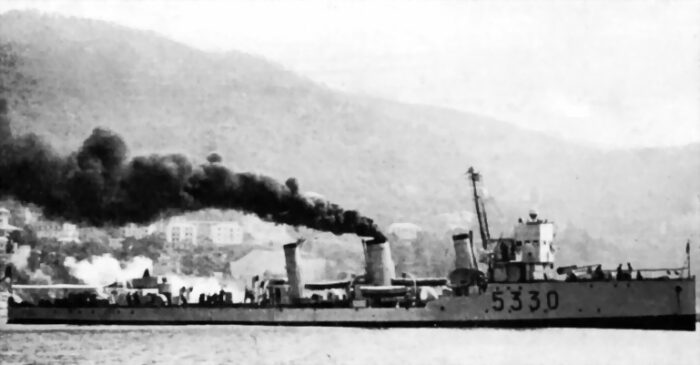
Abba as the minesweeper M5330, 1950s.
 Pilade Bronzetti (BR)
Pilade Bronzetti (BR)

Pilade Bronzetti (BR) was laid down at Odero on 12 September 1913, launched 26 October 1915 and completed on 1 January 1916. On 6 December 1920 the crew mutinied and joined the Fiume cause, placed under command of Gabriele D’Annunzio hismelf. She was later returned into the Regia Marina and in 1921 she renamed Giuseppe Dezza. During the Second World War, she carried out 174 escort missions and 27 ASW missions. At the armistice she was captured by the Germans in Fiume, modified and renamed TA. 35 (Scuttled by her crew on 16 September 1943, refloated by German Navy). On 17 August 1944, in the Fasana channel, she struck a mine and broke in two, sinking and taking with her 71 men. It seems she was again refloated but scuttled again on 3 May 1945, never repaired.
 Giuseppe Missori (MS)
Giuseppe Missori (MS)

Giuseppe Missori was from Odero, laid down on 19 January 1914, launched on 20 December 1915, commissioned on 7 March 1916. On 6 August 1928, she was accidentally involved in the tragedy of the submarine F. 14, ramming he rin bad weather and sinking her. The 27 crew members, trapped in the wreck, died before any rescue. She fought smugglers for the Republicans during the Spanish Civil War. In the Second World War she made many missions as a convoy escort. On 10 September 1943, post-armistice, she was captured by the Germans in Durazzo, renamed TA. 22. The Italian crew managed to sabotage her on 6 October 1943. She was brought back into service, but scuttled in Muggia on 3 May 1945.
 Ippolito Nievo (NV)
Ippolito Nievo (NV)

Ippolito Nievo was from Odero, laid down on 19 August 1913, launched 24 July 1915 and commissioned on 1 October 1915. Record in WWI to come. She took part in a naval battle in the lower Adriatic on 22 December 1916 and was decommissioned in 1938, BU, due to her general state.
 Antonio Mosto (MO/MT)
Antonio Mosto (MO/MT)

She was one of the two built at Pattison, Naples, laid down on 9 October 1913, launched 20 May 1915, commissioned on 7 July 1915. During the Second World War she served in North Africa and later in Italy, suffering serious damage on 9 July 1941 while in Tripoli duenn g a RAF raid. Her AA downed an enemy aircraft that aimed and crashed on fell on her deck, damaging it and killing sailors, but the fire was mastered and she was repaired. In May 1943 she was caight by an US bombing raid on Livorno ans also damagedn, albeit more lightly by near misses. After the war she was reclassed as modified as a minesweeper, renamed M 5353, decommissioned in 1958. Stricken on 24 April 1958.
 Francesco Nullo (CL)
Francesco Nullo (CL)
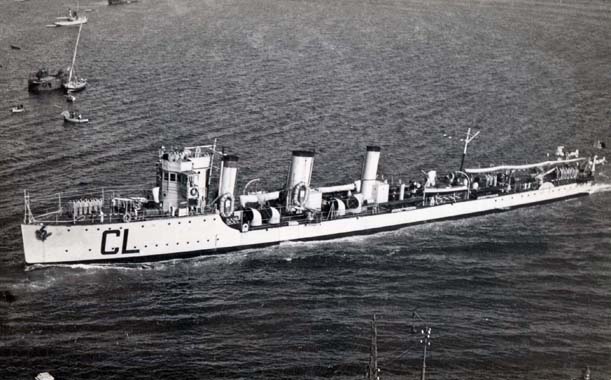
Francesco Nullo was the second one from Pattison, laid down 24 September 1913, launched 12 November 1914 and completed on 1 May 1915.
In 1920 she joined the Fiume cause under d’Annunzio. She was returned to the Regia Marina, renamed Fratelli Cairoli on 16 January 1921. In 1926 it was seriously damaged by a collision with the torpedo boat Enrico Cosenz. She was sent by Mussolini to catch republican smugglers during the Spanish Civil War. In WW2 she was used as an escort for convoys in an out North Africa. On 23 December 1940, while sailing from Benghazi to Tripoli when hitting a mine, sinking in a few minutes.
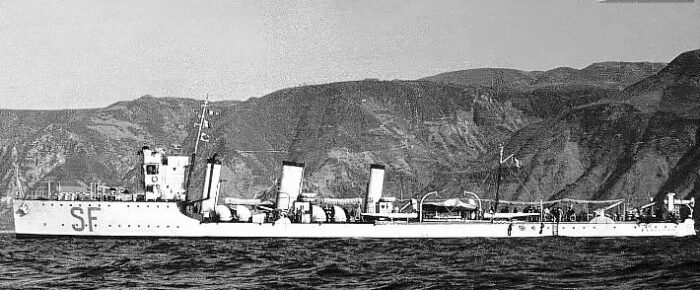
Simone Schiaffino (SF/SH) was from Odero, laid down on 12 September 1913, launched on 11 September 1915 and commissioned on 7 November 1915. She seized the Greek steamer Athinai, off Messina on 20 October 1940 but was sunk by an Italian mine off Cap Bon 24 April 1941.

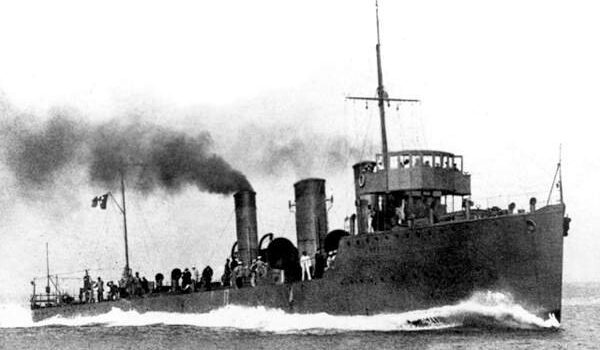
 Latest Facebook Entry -
Latest Facebook Entry -  X(Tweeter) Naval Encyclopedia's deck archive
X(Tweeter) Naval Encyclopedia's deck archive Instagram (@navalencyc)
Instagram (@navalencyc)





 French Navy
French Navy Royal Navy
Royal Navy Russian Navy
Russian Navy Armada Espanola
Armada Espanola Austrian Navy
Austrian Navy K.u.K. Kriegsmarine
K.u.K. Kriegsmarine Dansk Marine
Dansk Marine Nautiko Hellenon
Nautiko Hellenon Koninklije Marine 1870
Koninklije Marine 1870 Marinha do Brasil
Marinha do Brasil Osmanlı Donanması
Osmanlı Donanması Marina Do Peru
Marina Do Peru Marinha do Portugal
Marinha do Portugal Regia Marina 1870
Regia Marina 1870 Nihhon Kaigun 1870
Nihhon Kaigun 1870 Preußische Marine 1870
Preußische Marine 1870 Russkiy Flot 1870
Russkiy Flot 1870 Svenska marinen
Svenska marinen Søværnet
Søværnet Union Navy
Union Navy Confederate Navy
Confederate Navy Armada de Argentina
Armada de Argentina Imperial Chinese Navy
Imperial Chinese Navy Marinha do Portugal
Marinha do Portugal Mexico
Mexico Kaiserliche Marine
Kaiserliche Marine 1898 US Navy
1898 US Navy Sovietskiy Flot
Sovietskiy Flot Royal Canadian Navy
Royal Canadian Navy Royal Australian Navy
Royal Australian Navy RNZN Fleet
RNZN Fleet Chinese Navy 1937
Chinese Navy 1937 Kriegsmarine
Kriegsmarine Chilean Navy
Chilean Navy Danish Navy
Danish Navy Finnish Navy
Finnish Navy Hellenic Navy
Hellenic Navy Polish Navy
Polish Navy Romanian Navy
Romanian Navy Turkish Navy
Turkish Navy Royal Yugoslav Navy
Royal Yugoslav Navy Royal Thai Navy
Royal Thai Navy Minor Navies
Minor Navies Albania
Albania Austria
Austria Belgium
Belgium Columbia
Columbia Costa Rica
Costa Rica Cuba
Cuba Czechoslovakia
Czechoslovakia Dominican Republic
Dominican Republic Haiti
Haiti Hungary
Hungary Honduras
Honduras Estonia
Estonia Iceland
Iceland Eire
Eire Equador
Equador Iran
Iran Iraq
Iraq Latvia
Latvia Liberia
Liberia Lithuania
Lithuania Mandchukuo
Mandchukuo Morocco
Morocco Nicaragua
Nicaragua Persia
Persia San Salvador
San Salvador Sarawak
Sarawak Uruguay
Uruguay Venezuela
Venezuela Zanzibar
Zanzibar Warsaw Pact Navies
Warsaw Pact Navies Bulgaria
Bulgaria Hungary
Hungary

 Bundesmarine
Bundesmarine Dutch Navy
Dutch Navy Hellenic Navy
Hellenic Navy Marina Militare
Marina Militare Yugoslav Navy
Yugoslav Navy Chinese Navy
Chinese Navy Indian Navy
Indian Navy Indonesian Navy
Indonesian Navy JMSDF
JMSDF North Korean Navy
North Korean Navy Pakistani Navy
Pakistani Navy Philippines Navy
Philippines Navy ROKN
ROKN Rep. of Singapore Navy
Rep. of Singapore Navy Taiwanese Navy
Taiwanese Navy IDF Navy
IDF Navy Saudi Navy
Saudi Navy Royal New Zealand Navy
Royal New Zealand Navy Egyptian Navy
Egyptian Navy South African Navy
South African Navy






























 Ukrainian Navy
Ukrainian Navy dbodesign
dbodesign